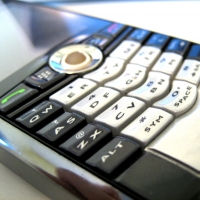FCC Launches Security Checker Tool for Smartphones

Worried that consumers aren’t doing enough to ward against possible security threats on their smartphones, the Federal Communications Commission (FCC), the US Department of Homeland Security, the Federal Trade Commission, the National Cyber Security Alliance, and others in the private sector are trying to get consumers to take steps.
The FCC launched the Smartphone Security Checker, a new online tool that creates a ten-step action plan for consumers, including tips on setting passwords, backing up data, and how to report stolen phones.
The FCC believes there’s reason to be concerned about growing risks from viruses, malicious apps, and mobile device theft and the lack of security measures on mobile devices. The FCC cites some hard facts.
According to a recent study, a total of 24,794 mobile malware threats were detected in 2011, a 367 percent rise over 6,760 threats in 2010. In 2011, a single data breach per compromised record, which includes mobile devices, averaged $194.60.
Did you know that every 3.5 seconds, someone in America loses his smartphone? However, less than 50 percent of subscribers use password protection on their devices, and almost half have no antivirus software on their smartphones.
Astonishing, considering the amount of personal, financial, and professional data stored on today’s smartphones. The FCC thinks the time is now to make mobile security a priority.
To use the tool, first select your mobile OS (Apple iOS, Android, BlackBerry, or Windows), and then follow ten customized steps and tips based on the operating system selected.
Included are best practices on how to set pins and passwords, where to find security apps, how to enable remote locating and data wiping, and how to back up and secure your data in case your device is lost or stolen. There is also information on how to safely use public Wi-Fi networks and what steps to take if your phone is stolen.
According to Forrester Research, about half of US mobile subscribers now own a smartphone, and two-thirds own multiple connected devices. This past holiday season may well have been the tipping point regarding adoption of smartphones over plain vanilla mobile devices, which makes taking smartphone security precautions, well—smart.
For more information and resources on mobile and cyber security, visit the Department of Homeland Security’s Stop.Think.Connect.™ Campaign.

